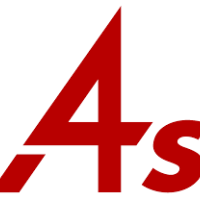News & Thinking
The place for news, insights, and our podcast – all Powered by Learning.

Thinking | January 5, 2026
Designing Learning with Intention: How Technology and AI Can Support Performance in 2026
As organizations head into a new year, learning and development teams are facing a familiar tension: expectations are rising, timelines are shrinking, and technology—especially AI—is advancing faster than many teams can comfortably absorb. Across recent episodes of Powered by Learning, one theme consistently emerged from guests: technology works best in learning when it serves performance, not when it simply speeds up production.

News | December 14, 2025
d’Vinci Interactive’s Blueprint of Life Honored for Innovation in Education
The Academy of Interactive & Visual Arts (AIVA) has honored d’Vinci with an Award of Distinction in the 31st Annual Communicator Awards for its work on BlueprintofLife.com, an innovative genomics-focused educational website and curriculum.

News | December 10, 2025
d’Vinci Honored with W³ Award for Training Website with Pennsylvania Department of Drug and Alcohol Programs
d’Vinci Interactive has received a W³ Award in the category of General Websites – Training for its work with the Pennsylvania Department of Drug and Alcohol Programs (DDAP). The award recognizes the creation of the DDAP Training Management System (TMS), a customized learning management system built on d’Vinci’s ecoLearn® platform.

Thinking | December 9, 2025
How to Use Podcasts to Power Learning and Boost ROI
This article was previously publishing on TrainingIndustry.com.
Today’s training methods must be flexible, accessible and engaging. One tool gaining traction among learning and development (L&D) professionals is the podcast, a format once reserved for entertainment and storytelling that is now transforming how organizations deliver learning.

Podcast | December 5, 2025
Smarter Call Center Training: How AI Is Changing the Learning Experience
What happens when classic instructional design models meet cutting-edge AI tools? In this episode of Powered by Learning, Transcarent's Director of Learning and Development Sheldon Thomas talks about applying the ADDIE model to a modern healthcare call center environment, from multi-stage onboarding to AI-enabled simulations. Learn how his team balances speed, personalization, and strong design to deliver training that actually changes performance.

News | December 2, 2025
d’Vinci Interactive Wins Two Davey Awards for Constellation Brands Training Modules
d’Vinci Interactive is honored to receive two 2025 Davey Awards recognizing excellence in custom eLearning created for Constellation Brands, one of the world’s leading producers of premium beer, wine, and spirits.

News | November 18, 2025
d’Vinci Wins Davey Award for Work with Sandy Hook Promise

Podcast | November 13, 2025
Serving People First: How Weis Markets Elevates Learning and Leadership
How does a three-person L&D team support 23,000 associates across seven states? In this episode, Chris Chappell, Director of Learning & Development at Weis Markets, shares how servant leadership, clear career paths, and just-in-time video microlearning are elevating the employee experience—and the customer experience—across retail, manufacturing, and logistics.

Podcast | October 30, 2025
Staying Ahead of Change: How the 4As Elevates Advertising Agencies
The advertising agency business is rapidly changing, making learning and development more essential than ever. In this episode of Powered by Learning, Sean McGlade, Senior Vice President of Talent and Learning Solutions at the 4As, shares how the association provides agencies of all sizes with innovative learning experiences that keep their business leaders, media strategists and technical and creative teams ahead of the competition.

Podcast | October 16, 2025
Breakthrough Thinking at UGI Corporation: Leading Change Through Curiosity and Courage
UGI Corporation’s Global Enterprise Lead, Learning & Development Wendy Laverty shares how “Breakthrough Thinking” is reshaping leadership, structure, and strategy at UGI. She explains how a series of workshops with team members has encouraged intentional reflection, language, and a culture of curiosity that’s unlocking new solutions and sustainable change.
About Us
d’Vinci Interactive is an award-winning comprehensive learning solutions provider for corporate, government, medical, K-12, and non-profit target markets.
Let's Work Together
Tell us more about your training and eLearning needs.